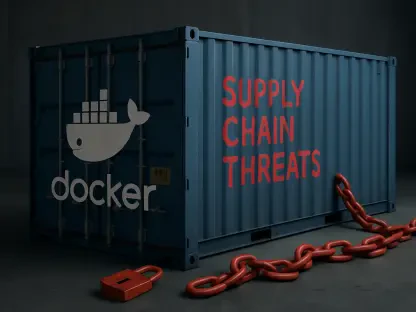Imagine a major cloud platform, relied upon by countless businesses, suddenly buckling under unexpected demand, leaving critical operations in limbo. This scenario unfolded in the Azure East US region, where a significant surge in compute resource needs led to virtual machine (VM) allocation failures. Starting on July 29, this incident exposed vulnerabilities in one of the most trusted cloud infrastructures, raising questions about reliability and crisis management. The purpose of this roundup is to gather diverse opinions, user feedback, and expert tips from across the tech community to understand what went wrong, how it impacted users, and what lessons can be drawn for future resilience in cloud services.
Exploring the Azure East US Incident: What Happened?
The capacity shortage in Azure East US caught many by surprise, as the General Compute pool struggled to meet a sudden spike in demand. Reports indicate that hardware was pushed beyond safe operational limits, affecting specific instance types and disrupting VM creation and updates. This technical glitch became a focal point for discussions on how even robust platforms can falter under unforeseen pressure.
Feedback from various tech forums and user communities highlights a shared concern over the incident’s severity. While some users noted temporary workarounds like switching to alternative regions such as East US 2, others pointed out that such solutions were not always feasible for time-sensitive operations. The consensus leans toward a need for deeper scrutiny into regional infrastructure planning to prevent similar bottlenecks.
A broader perspective from industry analysts suggests that this event is a wake-up call for cloud providers to reassess capacity forecasting models. Many argue that the rapid adoption of cloud services has outpaced the ability to scale physical resources in certain zones. This viewpoint underscores the urgency of addressing regional disparities in infrastructure to maintain service consistency.
Voices from the Field: User Experiences and Frustrations
Capacity Constraints: Unpacking the VM Allocation Failures
Diving into user accounts, a recurring theme is the frustration caused by insufficient compute resources during the Azure East US crisis. Many reported persistent errors when attempting to allocate VMs, with hardware limitations cited as the primary culprit. This bottleneck not only halted new deployments but also disrupted ongoing projects reliant on stable cloud performance.
Comments from system administrators reveal a deeper impact on business continuity, especially for those managing large-scale applications. The inability to access necessary resources led to delays in critical updates, with some users facing operational downtime. This feedback paints a picture of a ripple effect that extended beyond mere technical hiccups to tangible financial losses.
Insights from tech discussion boards also point to skepticism about the root cause, with some users questioning if the issue was truly isolated to one region. Speculation abounds that underlying infrastructure flaws might be more systemic, prompting calls for comprehensive audits of capacity distribution across all Azure zones. These opinions highlight a growing demand for transparency in how resources are managed.
Communication Gaps: Official Statements vs. On-the-Ground Realities
A significant point of contention among users is the disconnect between official updates and actual experiences during the crisis. Microsoft’s claim of mitigation by August 5 was met with doubt, as numerous administrators continued to report issues like “ZonalAllocationFailed” errors. This discrepancy has fueled discussions about the reliability of status updates during outages.
Community feedback suggests that the timing of the incident compounded frustrations, particularly for those undertaking critical upgrades, such as AKS cluster transitions to Kubernetes 1.31. Users expressed dismay over the lack of timely, actionable guidance, with many feeling left to navigate the crisis without adequate support. Such sentiments reflect a broader concern about trust in provider communications.
Industry observers have noted that this communication gap risks long-term damage to user confidence. Suggestions from various sources include establishing more granular, real-time updates during disruptions to align official narratives with user realities. This perspective emphasizes that effective dialogue is as crucial as technical fixes in maintaining customer loyalty.
Wider Impacts: Internal Disruptions and Regional Dynamics
Emerging discussions in tech circles reveal that the Azure East US demand spike had repercussions beyond customer VMs, affecting even internal Microsoft services. Reports of canceled maintenance activities during the same period hint at broader capacity strains within the region. This observation raises questions about the interconnectedness of service disruptions.
Some users and analysts have speculated on the role of regional dynamics in exacerbating the issue, noting that certain zones might be more prone to overload during simultaneous demand surges. Comparisons to other Azure regions suggest uneven resource distribution as a potential factor. These insights call for a closer look at how global networks handle localized spikes.
A shared viewpoint among community contributors is that such incidents might not be isolated anomalies but symptoms of deeper scaling challenges. Recommendations include stress-testing regional infrastructures to identify weak points before they impact users. This proactive approach is seen as essential to mitigating the cascading effects witnessed in this event.
Recurring Outages: A Pattern in Azure’s Reliability Challenges
Looking at the bigger picture, many in the tech community contextualize the East US incident within a series of recent Azure disruptions. References to a global Outlook outage earlier this year, which lasted over 11 hours, and other regional issues fuel debates on whether these events signal systemic weaknesses. This historical lens adds weight to current concerns.
Differing opinions emerge on the implications of these recurring outages, with some arguing that they reflect gaps in incident response strategies rather than inherent flaws. Others, however, believe that the frequency of such disruptions points to a need for overhauling capacity planning frameworks. This divide underscores the complexity of diagnosing cloud reliability issues.
A common thread among various perspectives is the risk of future disruptions if demand continues to outstrip infrastructure growth. Suggestions range from investing in predictive analytics for demand surges to enhancing redundancy across regions. These ideas aim to spark a broader conversation on building more resilient cloud ecosystems.
Lessons and Strategies: Navigating Cloud Demand Spikes
Synthesizing the insights gathered, a key takeaway is the critical need for robust capacity management to prevent VM allocation failures like those seen in Azure East US. Community tips include diversifying workloads across multiple regions to avoid over-reliance on a single zone. This strategy is often cited as a practical buffer against localized shortages.
Another recurring piece of advice from users and analysts alike is the importance of transparent communication during crises. Many advocate for cloud providers to adopt more candid, frequent updates that reflect the true state of resolution efforts. Such measures are seen as vital to rebuilding trust when disruptions occur.
For cloud providers, a frequently mentioned recommendation is to enhance forecasting tools to better anticipate demand spikes. Insights from industry discussions also stress the value of investing in scalable infrastructure to handle rapid growth. These combined strategies are viewed as essential steps toward ensuring service stability in an era of increasing cloud dependency.
Reflecting on the Roundup: Next Steps for Cloud Reliability
Looking back, this compilation of perspectives on the Azure East US demand spike crisis illuminated a multifaceted challenge involving technical constraints, user dissatisfaction, and communication shortfalls. The varied opinions and experiences shared by the community painted a comprehensive picture of the incident’s impact. It became clear that while temporary fixes were attempted, deeper systemic issues lingered in the minds of many.
Moving forward, actionable steps emerged as a priority, such as encouraging businesses to implement multi-region redundancy in their cloud strategies to safeguard against similar disruptions. Cloud providers, on the other hand, were urged to refine their crisis response protocols, ensuring that user feedback shapes recovery efforts. These considerations offered a path toward stronger, more reliable cloud services.
Beyond immediate fixes, the discussions pointed to a need for ongoing dialogue within the tech industry about balancing rapid growth with infrastructure stability. Exploring resources on cloud resilience and capacity planning was suggested as a valuable next step for stakeholders. This focus on continuous improvement held promise for preventing future crises and sustaining trust in cloud platforms.









